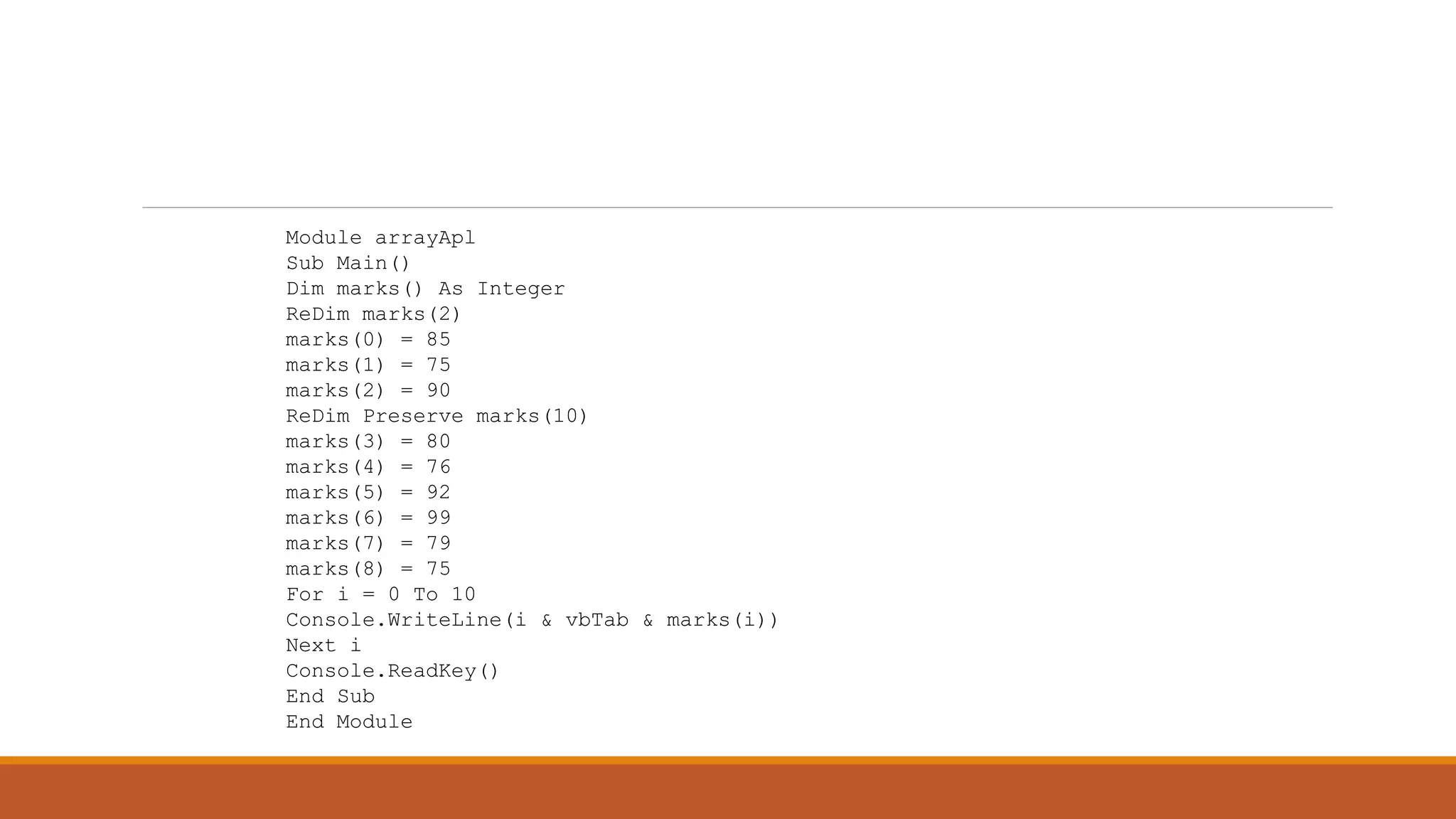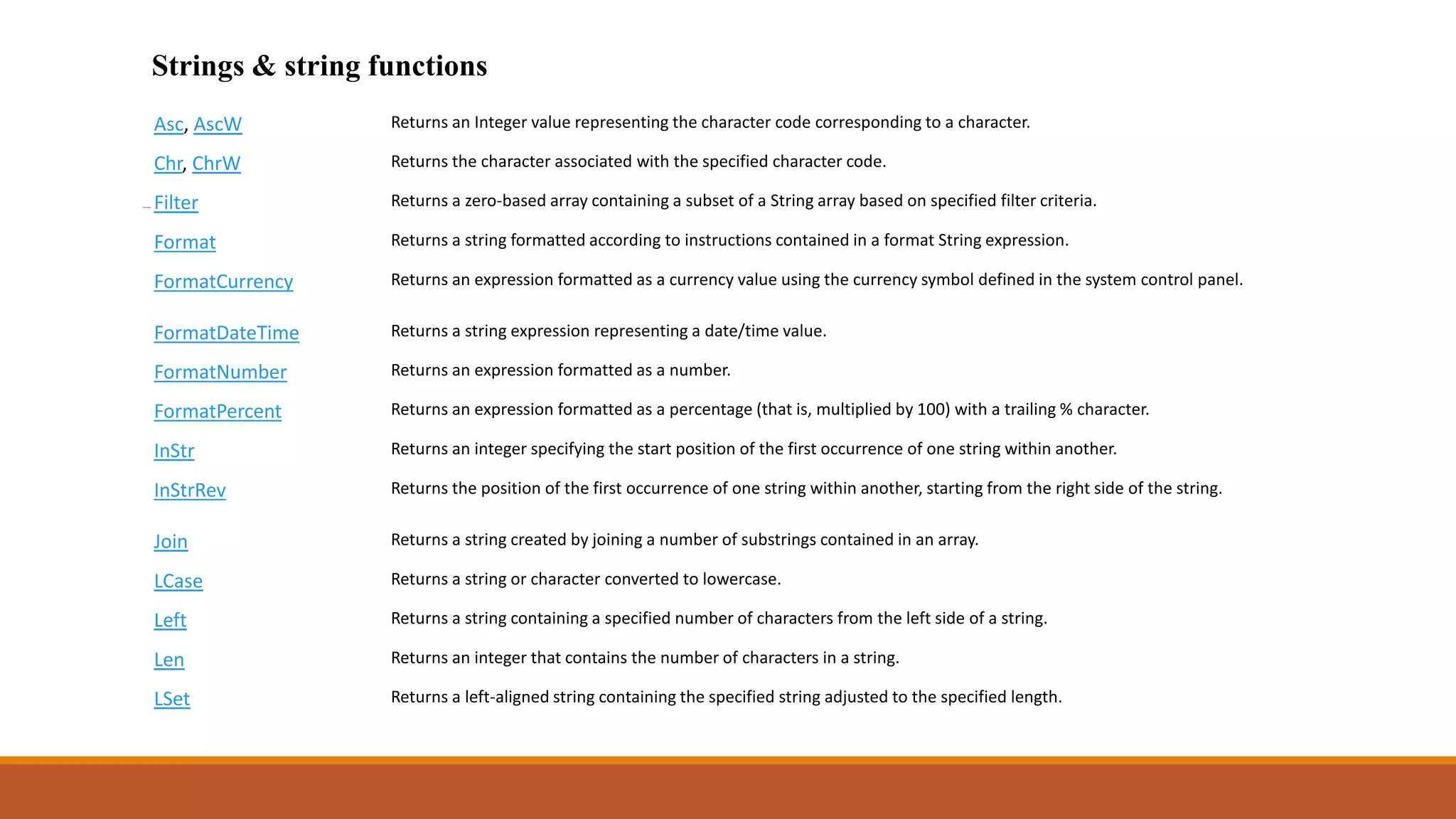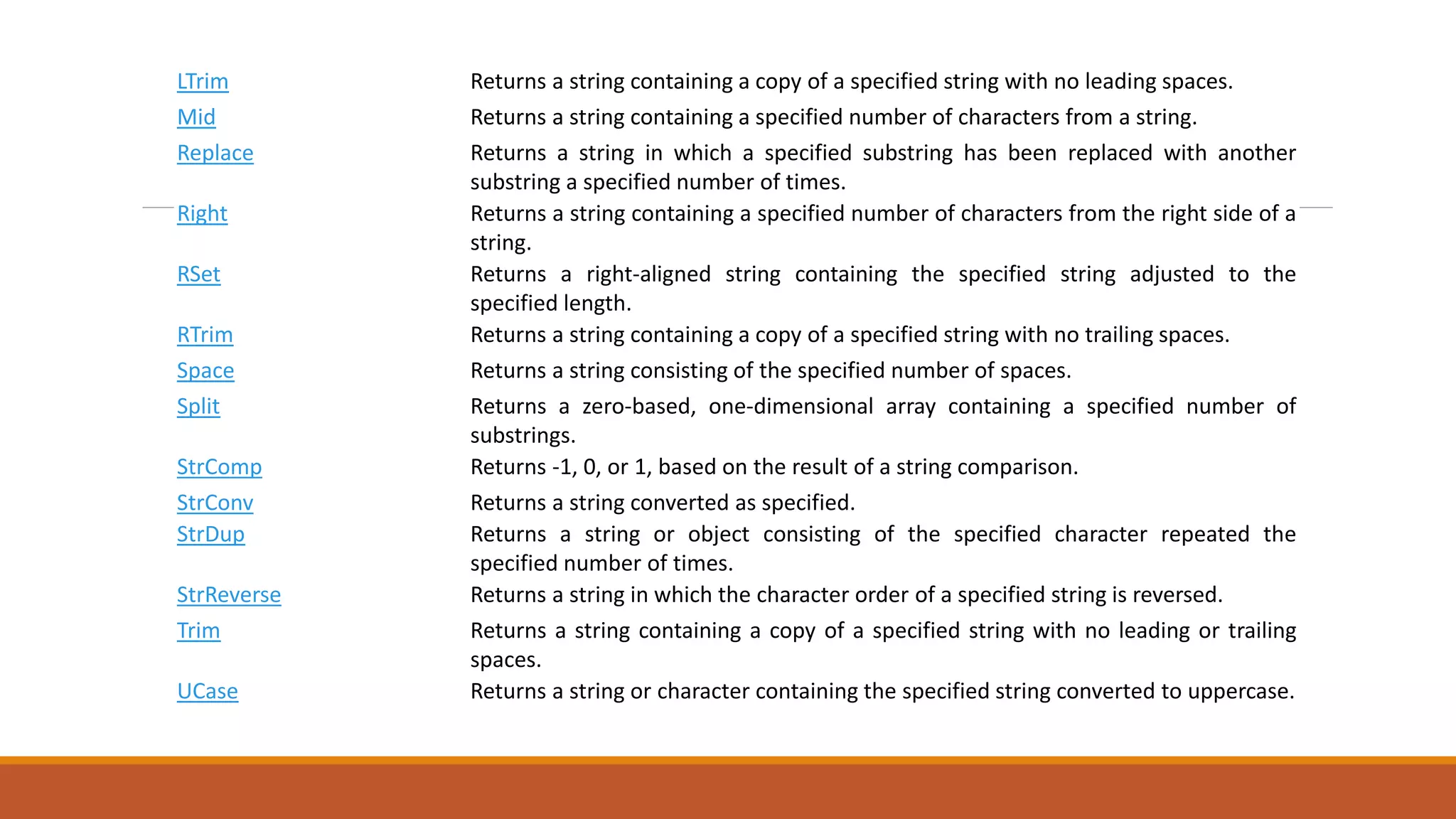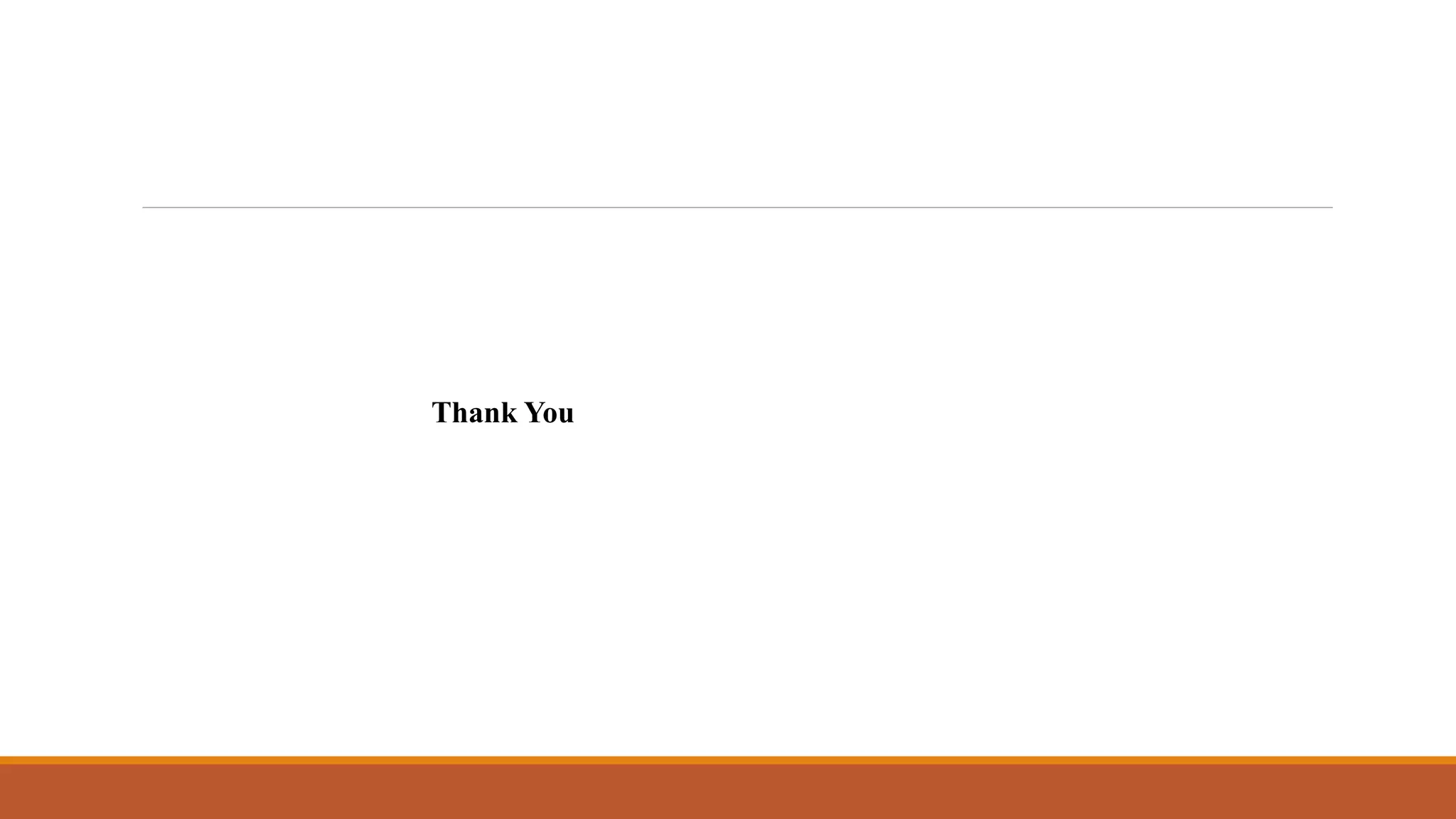The document discusses various control statements and loops in VB.NET. It explains if-then, if-then-else, and if-then-elseif conditional statements. It also covers select case statements and different types of loops - do while, for next, while-end while, and for each loops. The document provides syntax and examples for each statement and loop. It also discusses handling dates and times, data type conversion functions, and declaring and manipulating arrays in VB.NET.

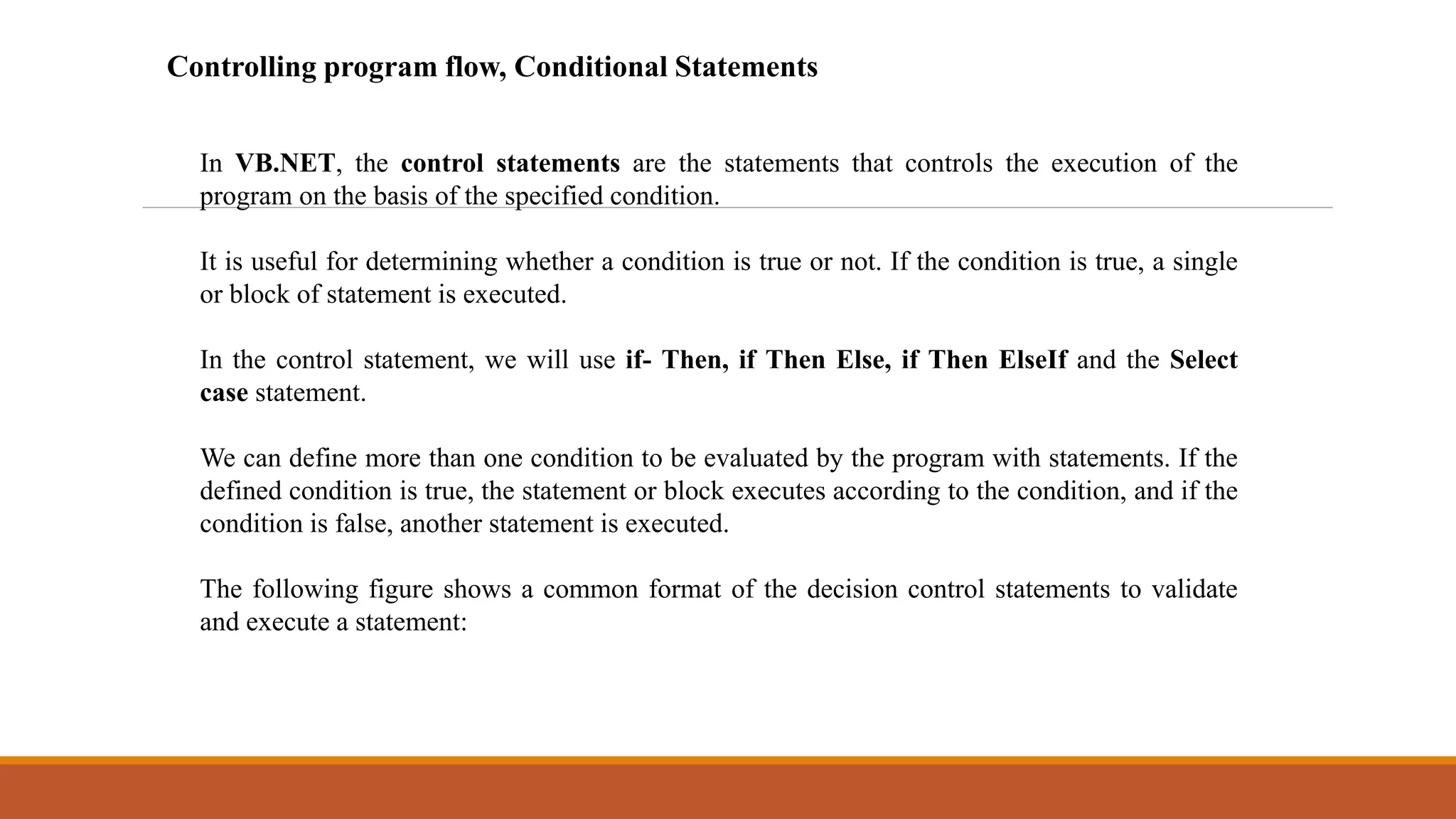

![If-Then Statement
The If-Then Statement is a control statement that defines one or more conditions, and if the particular
condition is satisfied, it executes a piece of information or statements.
Syntax:
If condition Then
[Statement or block of Statement]
End If
In If-Then Statement, the condition can be a Boolean, logical, or relational condition, and the statement
can be single or group of statements that will be executed when the condition is true.](https://image.slidesharecdn.com/unitiiics-210216110743/75/BSc-III-Unit-iii-VB-NET-4-2048.jpg)
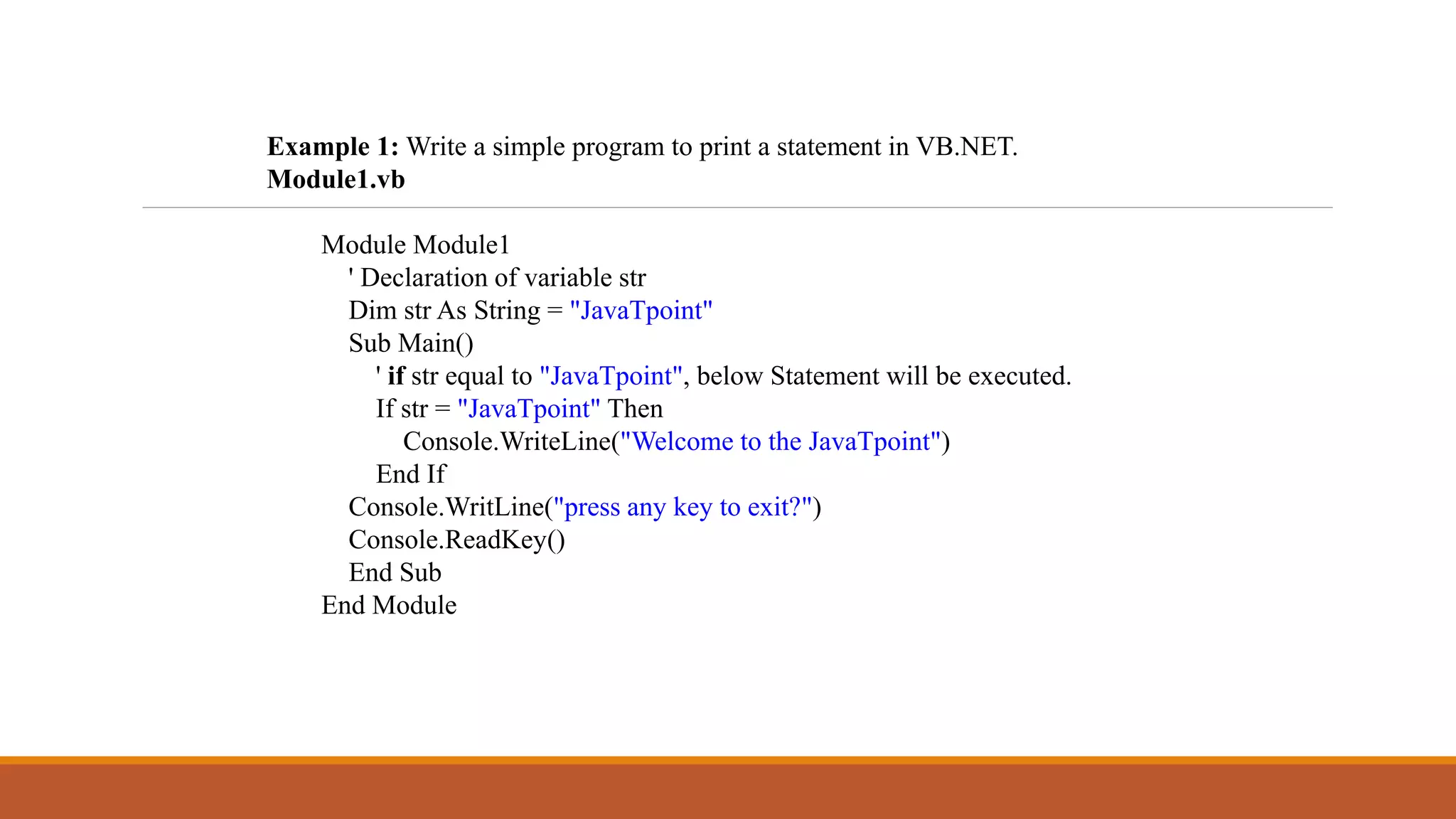
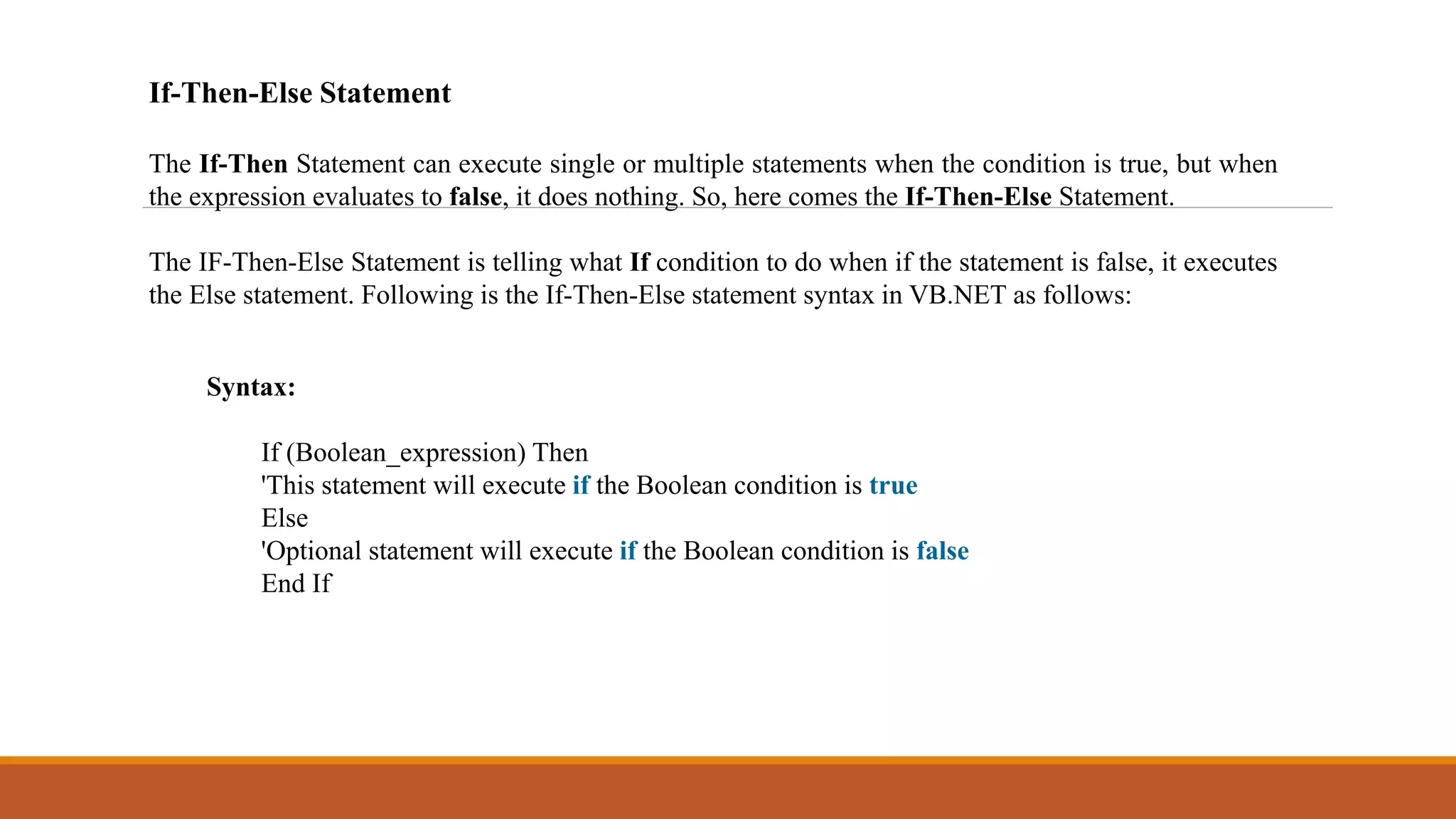
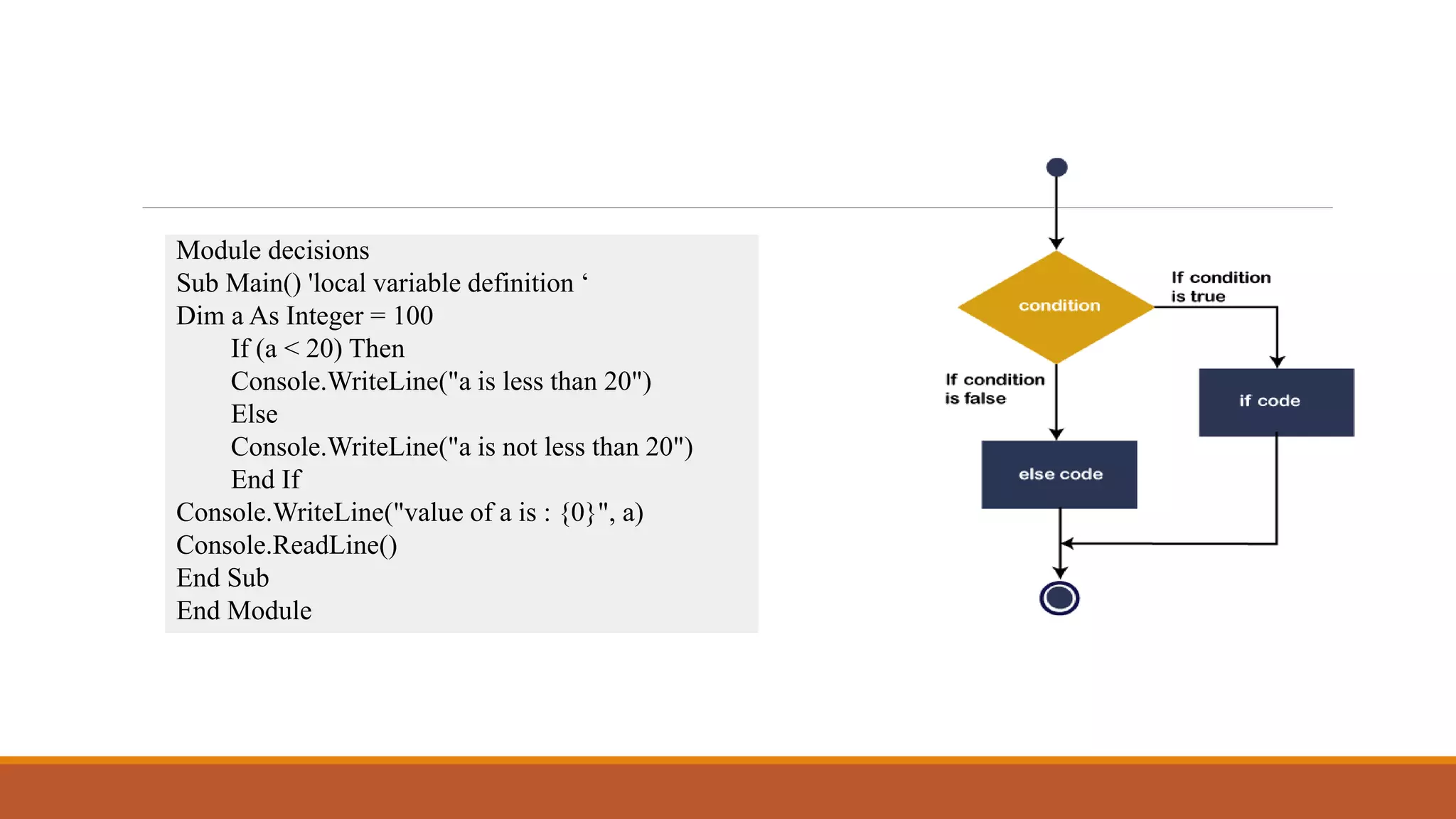
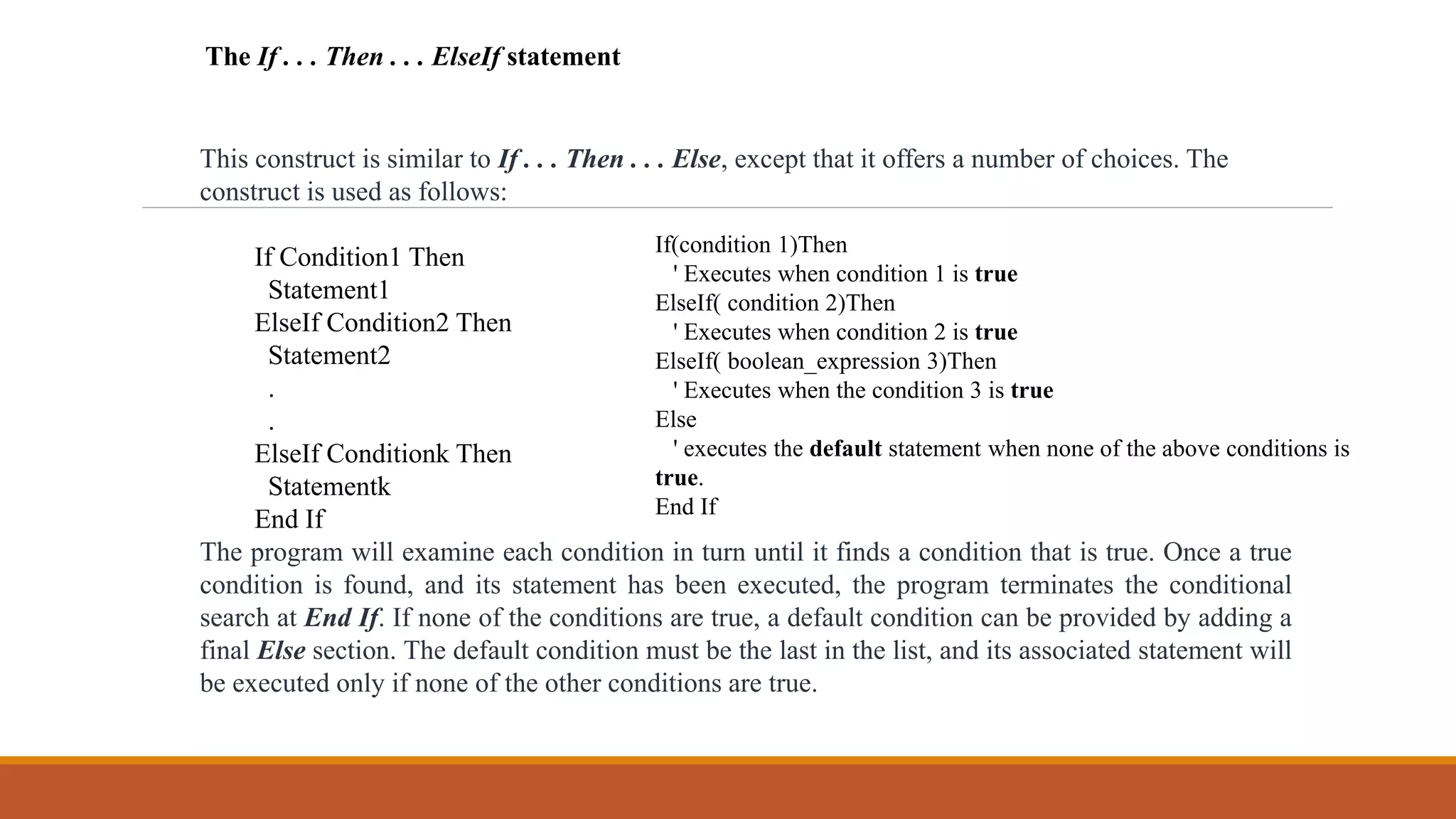

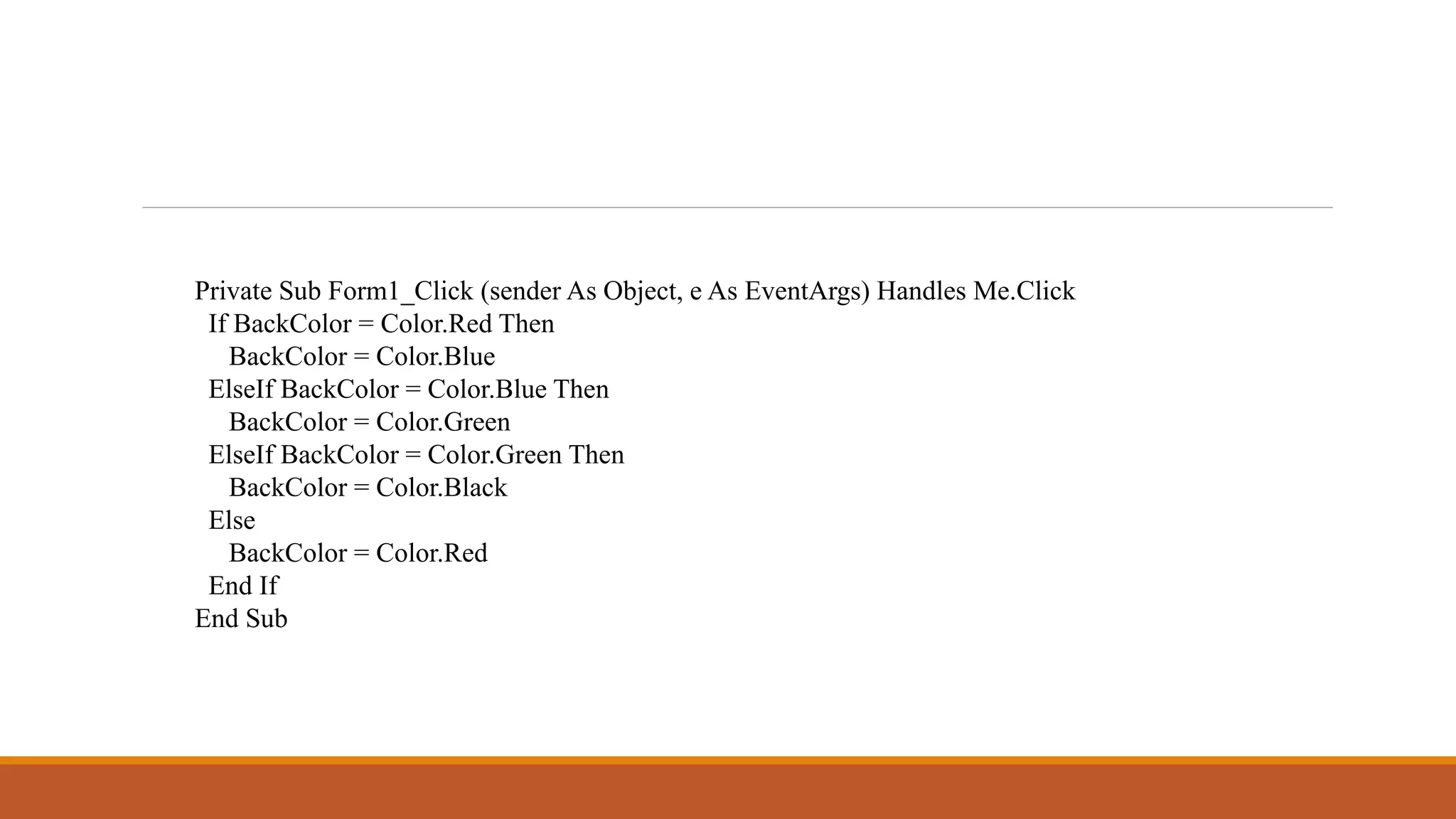
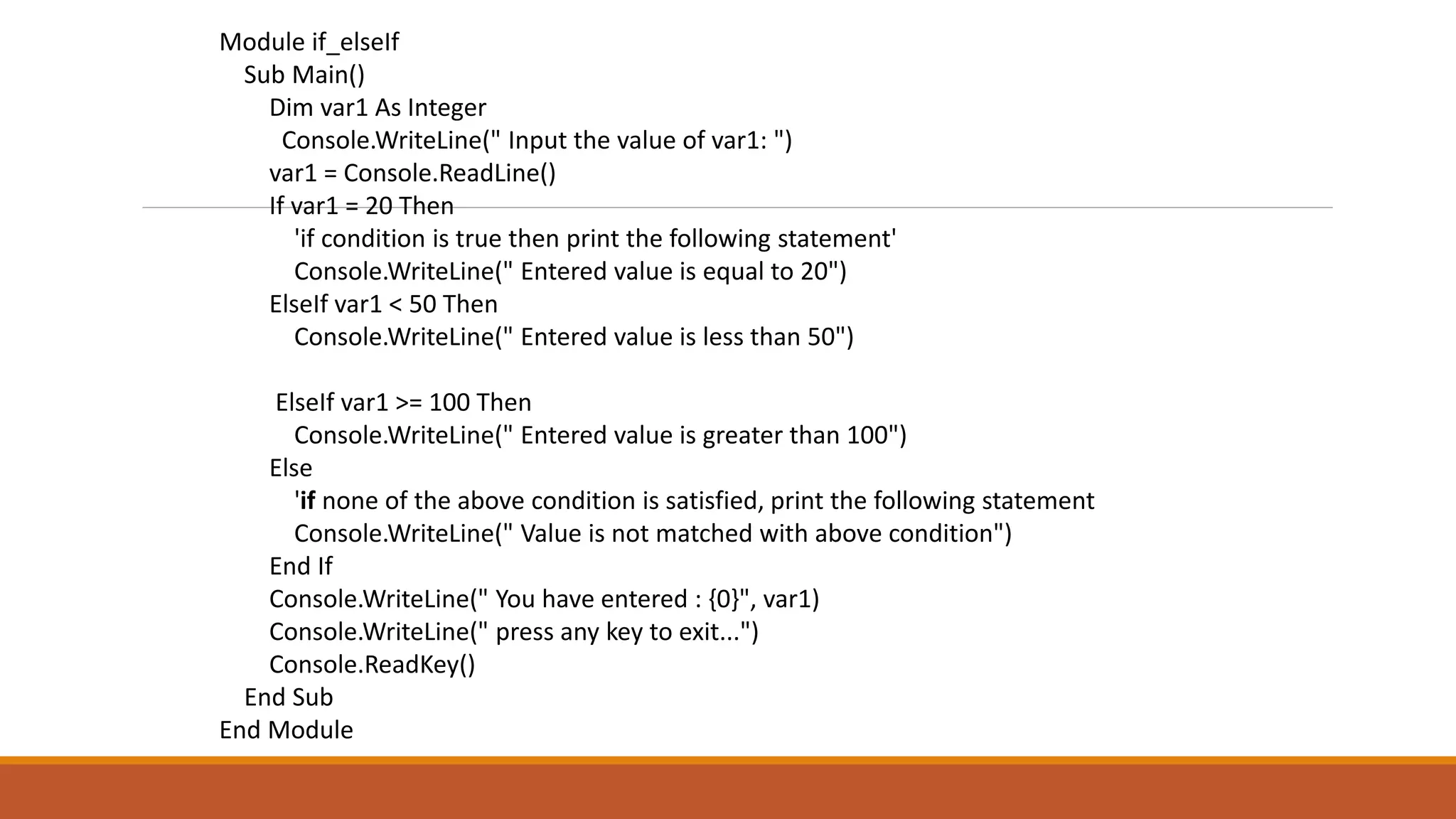
![A Select Case statement allows a variable to be tested for equality against a list of values. Each value is called
a case, and the variable being switched on is checked for each select case.
The syntax for a Select Case statement in VB.Net is as follows −
Select [ Case ] expression
[ Case expressionlist
[ statements ] ]
[ Case Else
[ elsestatements ] ]
End Select
Where,
expression − is an expression that must evaluate to any of the elementary data type in VB.Net, i.e., Boolean, Byte, Char,
Date, Double, Decimal, Integer, Long, Object, SByte, Short, Single, String, UInteger, ULong, and UShort.
expressionlist − List of expression clauses representing match values for expression. Multiple expression clauses are
separated by commas.
statements − statements following Case that run if the select expression matches any clause in expressionlist.
elsestatements − statements following Case Else that run if the select expression does not match any clause in
the expressionlist of any of the Case statements.
Select Case](https://image.slidesharecdn.com/unitiiics-210216110743/75/BSc-III-Unit-iii-VB-NET-12-2048.jpg)

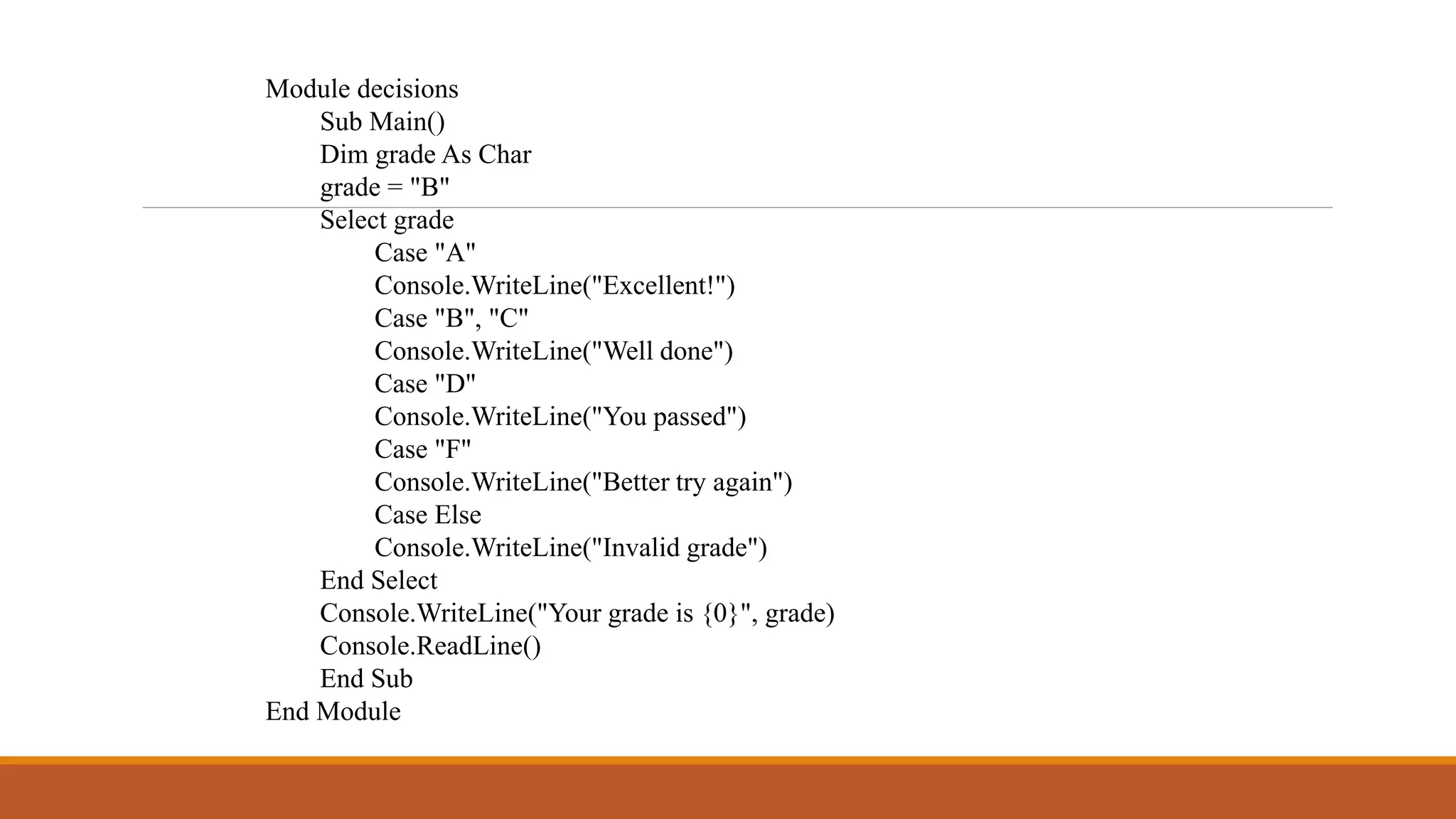

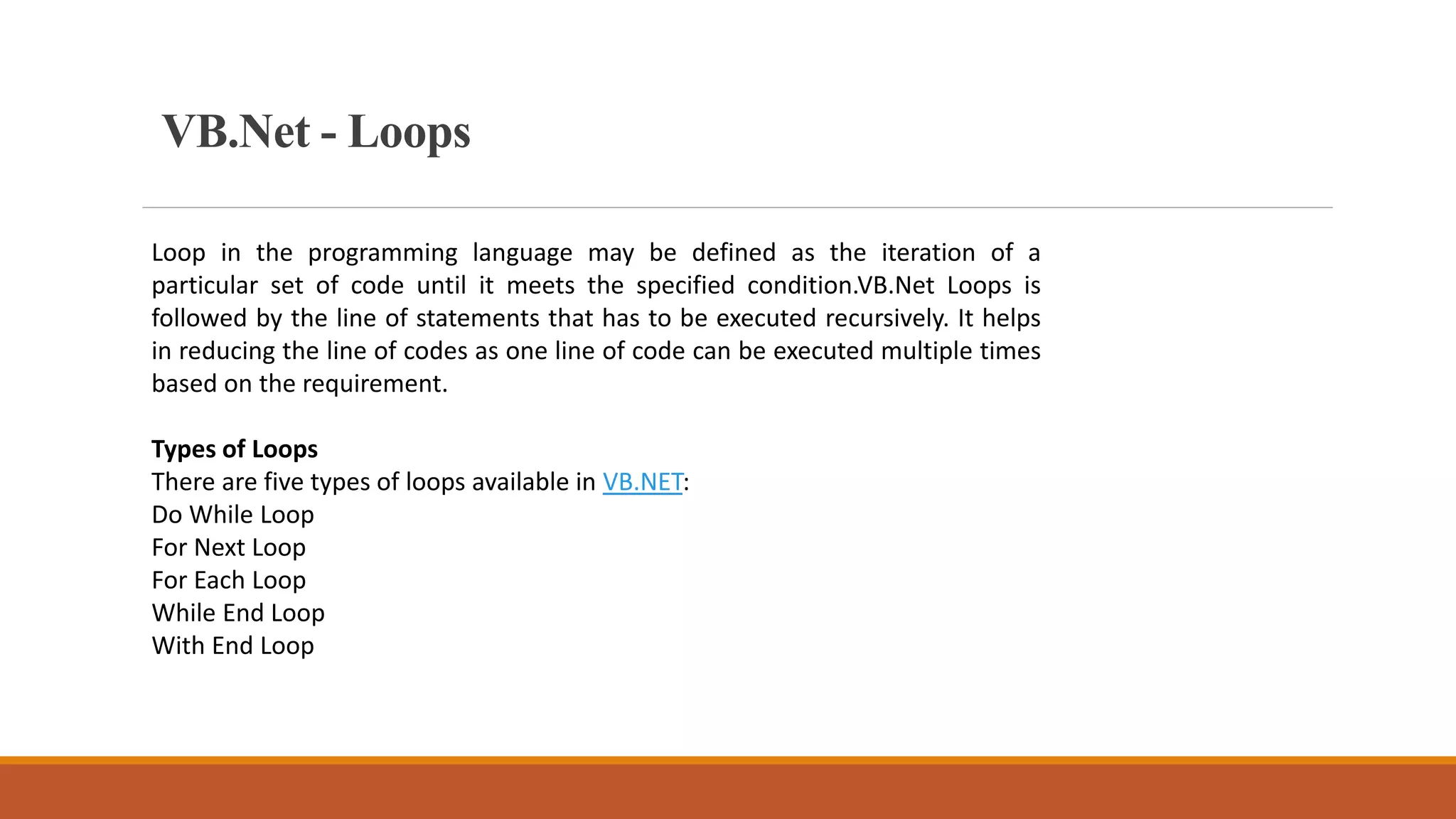
![Do While Loop
In VB.NET, Do While loop is used to execute blocks of statements in the program, as
long as the condition remains true. It is similar to the While End Loop, but there is
slight difference between them. The while loop initially checks the defined condition,
if the condition becomes true, the while loop's statement is executed. Whereas in
the Do loop, is opposite of the while loop, it means that it executes the Do statements,
and then it checks the condition.
Do
[ Statements to be executed]
Loop While Boolean_expression
// or
Do
[Statement to be executed]
Loop Until Boolean_expression](https://image.slidesharecdn.com/unitiiics-210216110743/75/BSc-III-Unit-iii-VB-NET-17-2048.jpg)

![While... End While Loop
It executes a series of statements as long as a given condition is True.
The syntax for this loop construct is −
While condition
[ statements ]
[ Continue While ]
[ statements ]
[ Exit While ]
[ statements ]
End While
Here, statement(s) may be a single statement or a block of statements. The
condition may be any expression, and true is logical true. The loop iterates while
the condition is true.
When the condition becomes false, program control passes to the line immediately
following the loop.](https://image.slidesharecdn.com/unitiiics-210216110743/75/BSc-III-Unit-iii-VB-NET-19-2048.jpg)
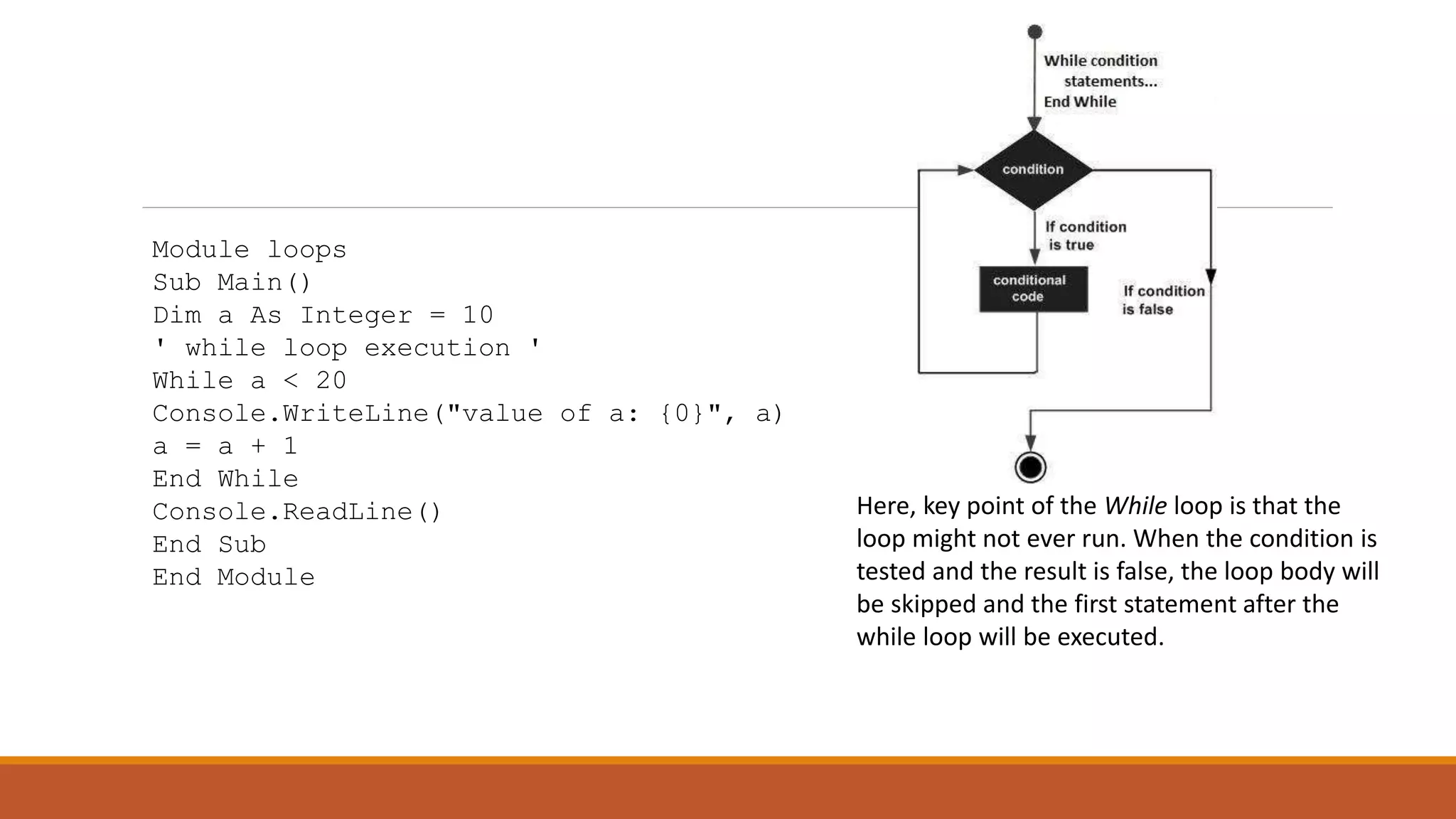
![1. For Next Loop
For Next loop is the most frequently used loop in Vb.net. It usually checks the condition
and if it is satisfied, it lets the codes mentioned under its body execute else moves to
the next condition. It is used to perform the interaction for particular tasks for a number
of times. The next loop is available in all of the programming languages but the system
and the keywords vary.
For counter [ As datatype ] = start To end [ Step step ]
[ statements ]
[ Continue For ]
[ statements ]
[ Exit For ]
[ statements ]
Next [ counter ]](https://image.slidesharecdn.com/unitiiics-210216110743/75/BSc-III-Unit-iii-VB-NET-21-2048.jpg)
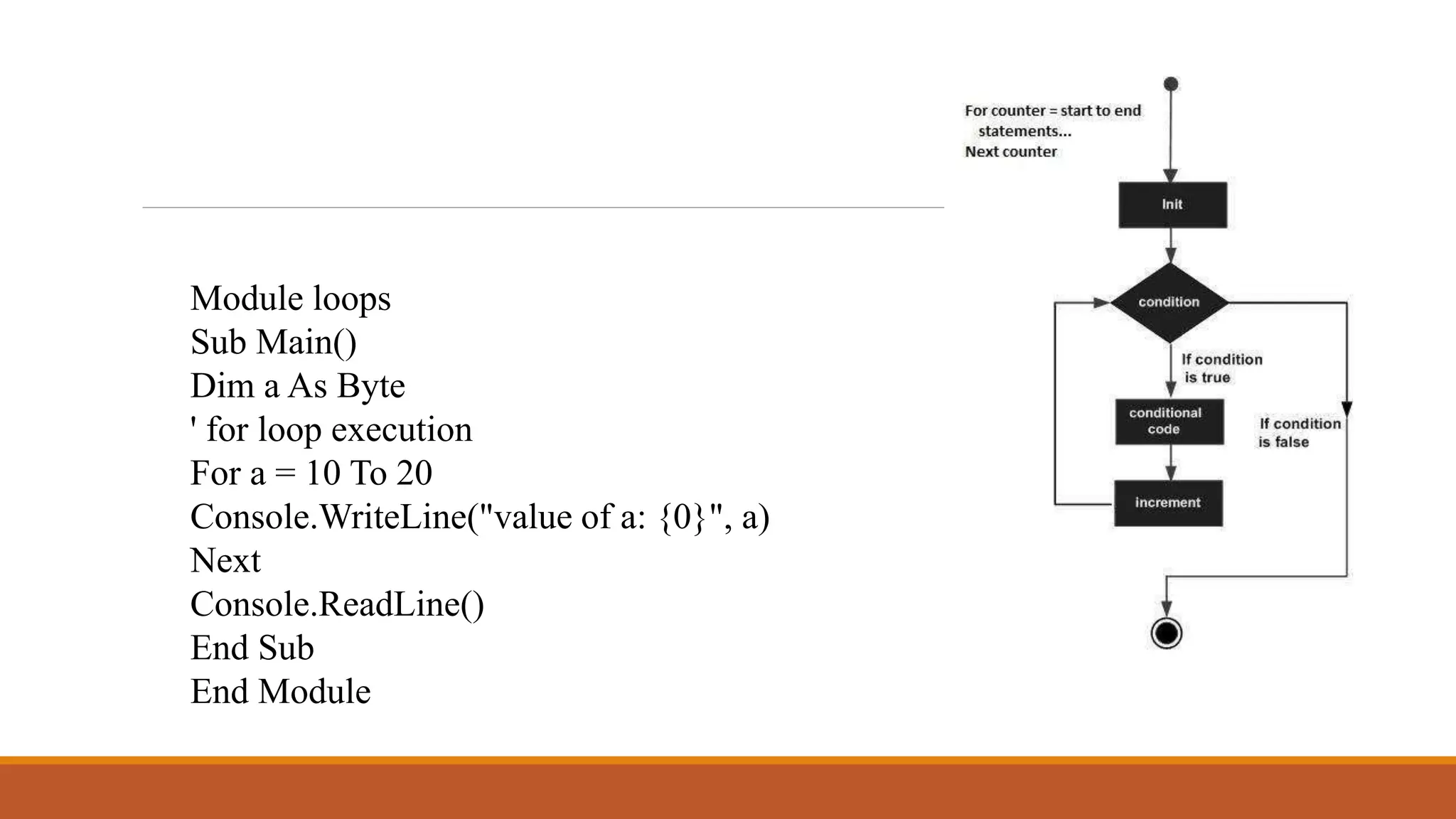
![It is not exactly a looping construct. It executes a series of statements that repeatedly refers to a single object or
structure so that the statements can use a simplified syntax when accessing members of the object or structure. When
using a structure, you can only read the values of members or invoke methods, and you get an error if you try to
assign values to members of a structure used in a With...End With statement.
The syntax
With objectExpression
[ statements ]
End With
objectExpression--Required. An expression that evaluates to an object. The expression may be arbitrarily complex
and is evaluated only once. The expression can evaluate to any data type, including elementary types.
Statements--Optional. One or more statements between With and End With that may refer to members of an object
that's produced by the evaluation of objectExpression.
End With--Required. Terminates the definition of the With block.
With... End With Statement](https://image.slidesharecdn.com/unitiiics-210216110743/75/BSc-III-Unit-iii-VB-NET-23-2048.jpg)
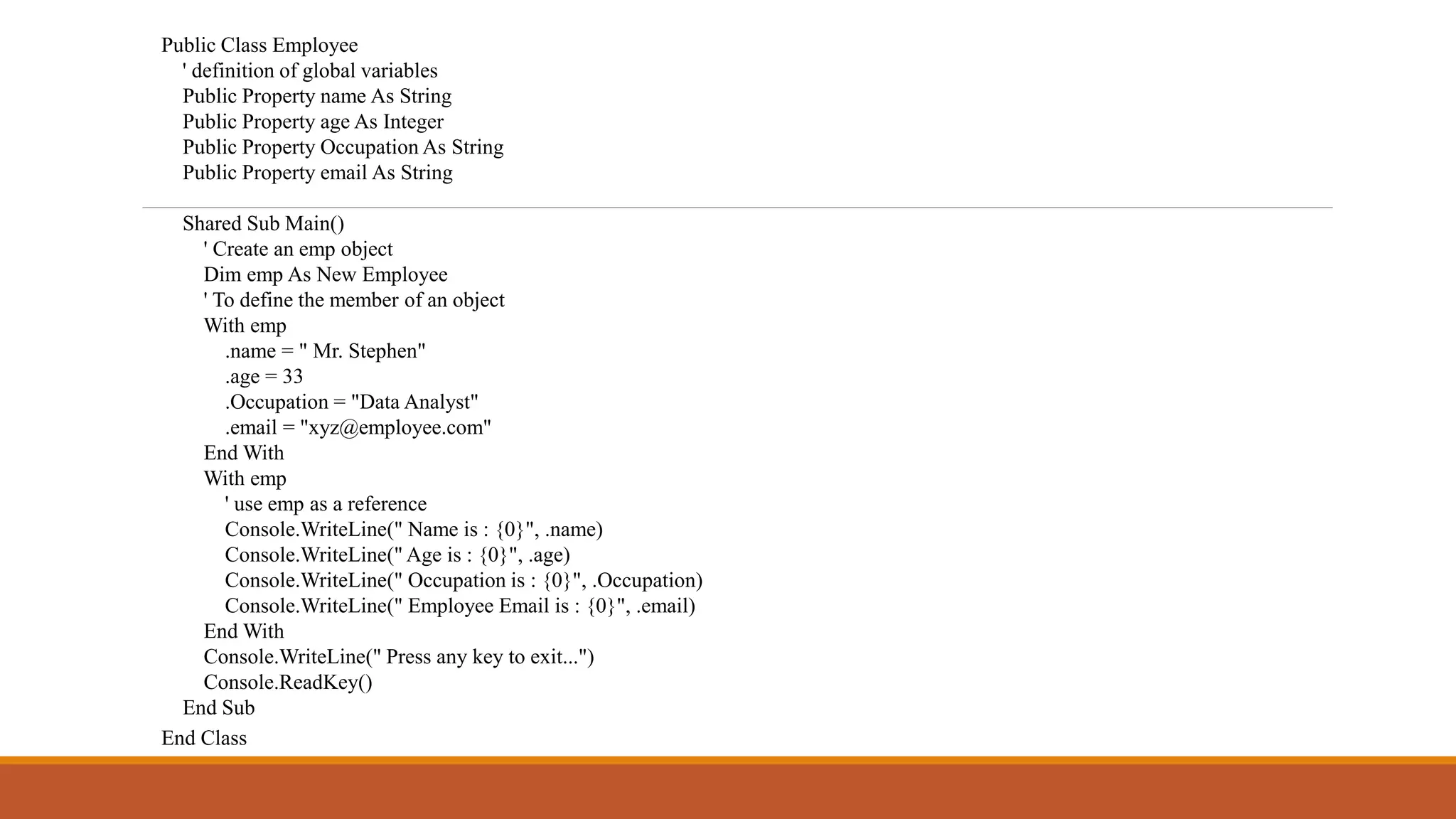
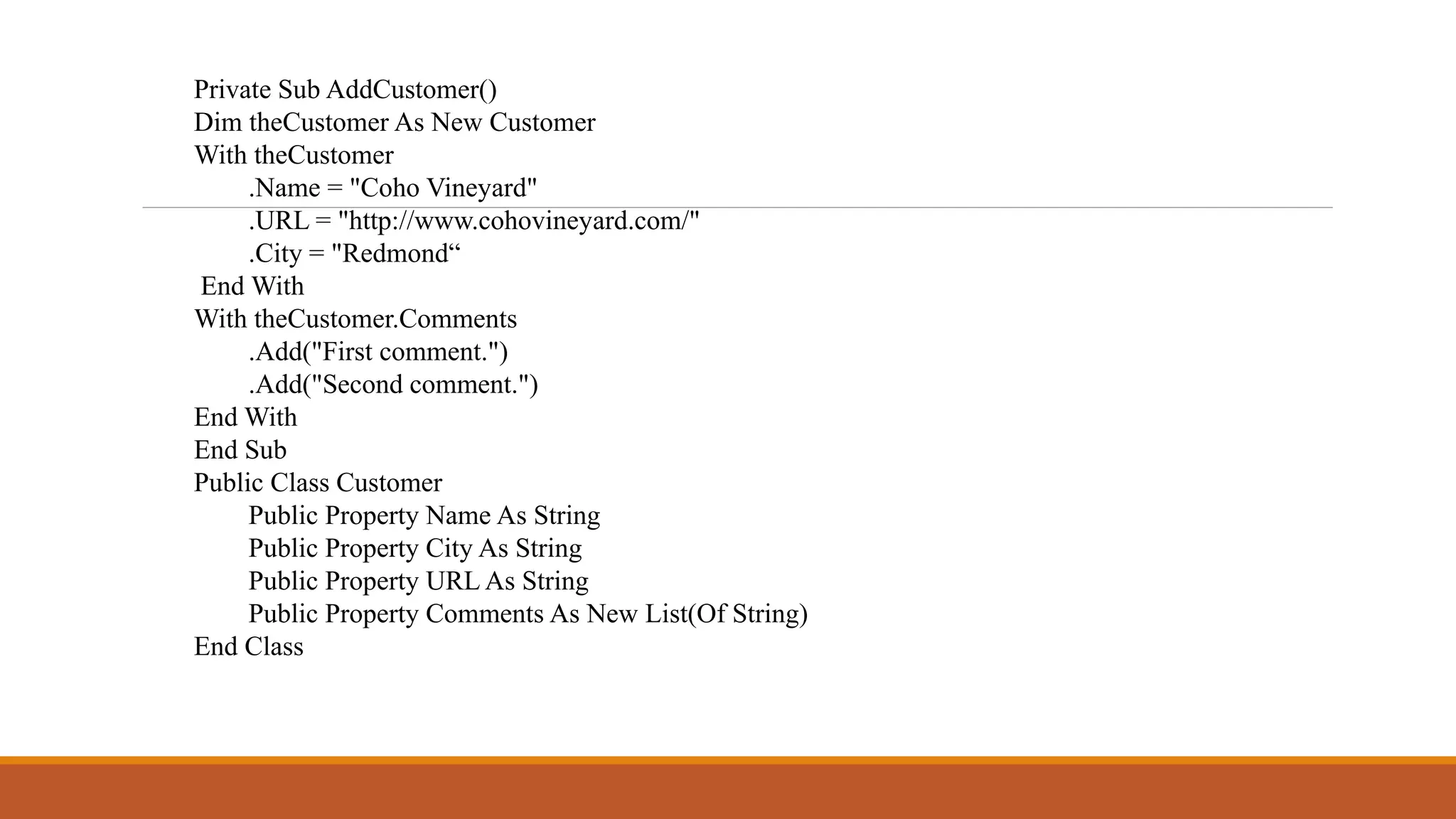
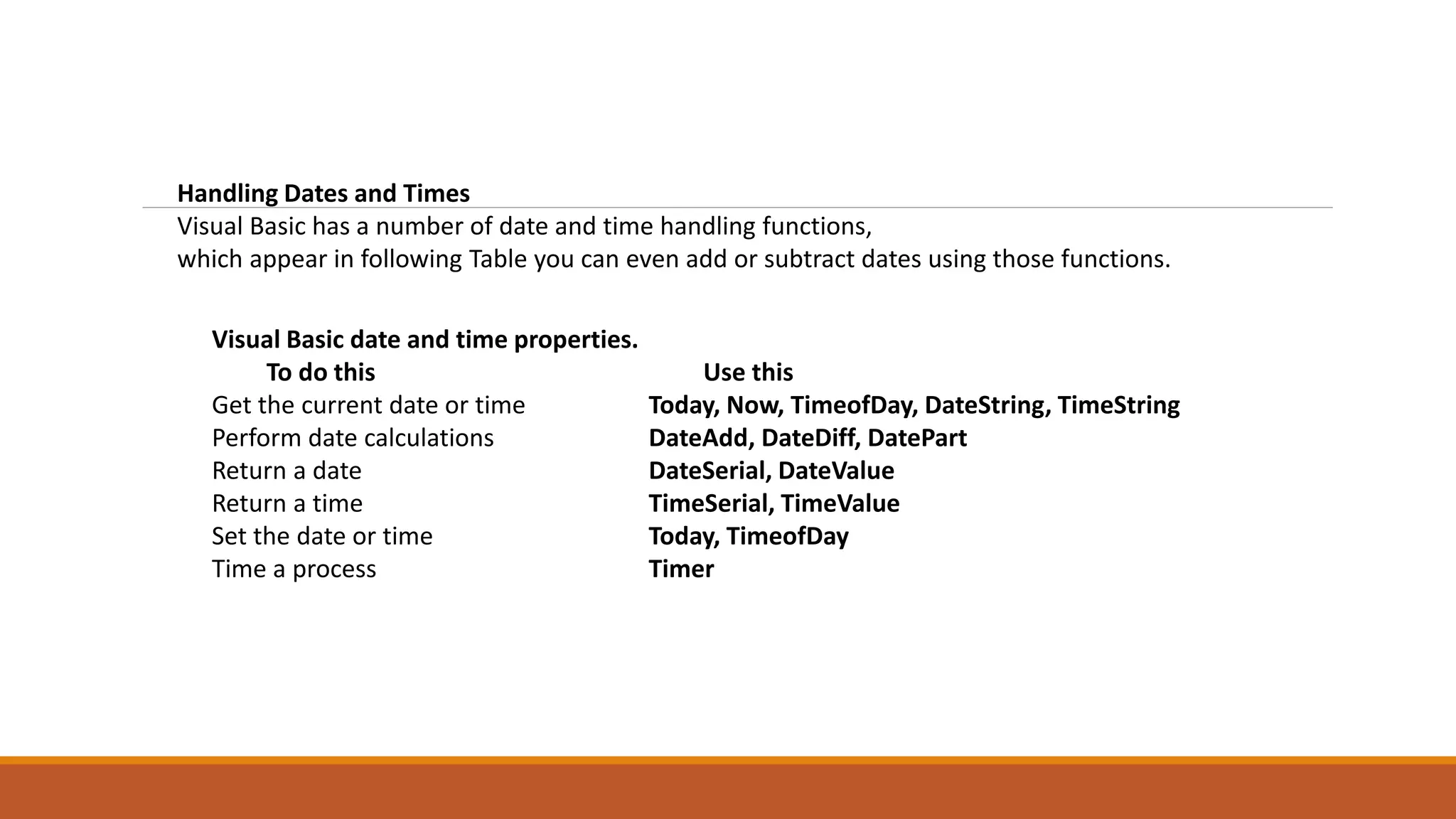
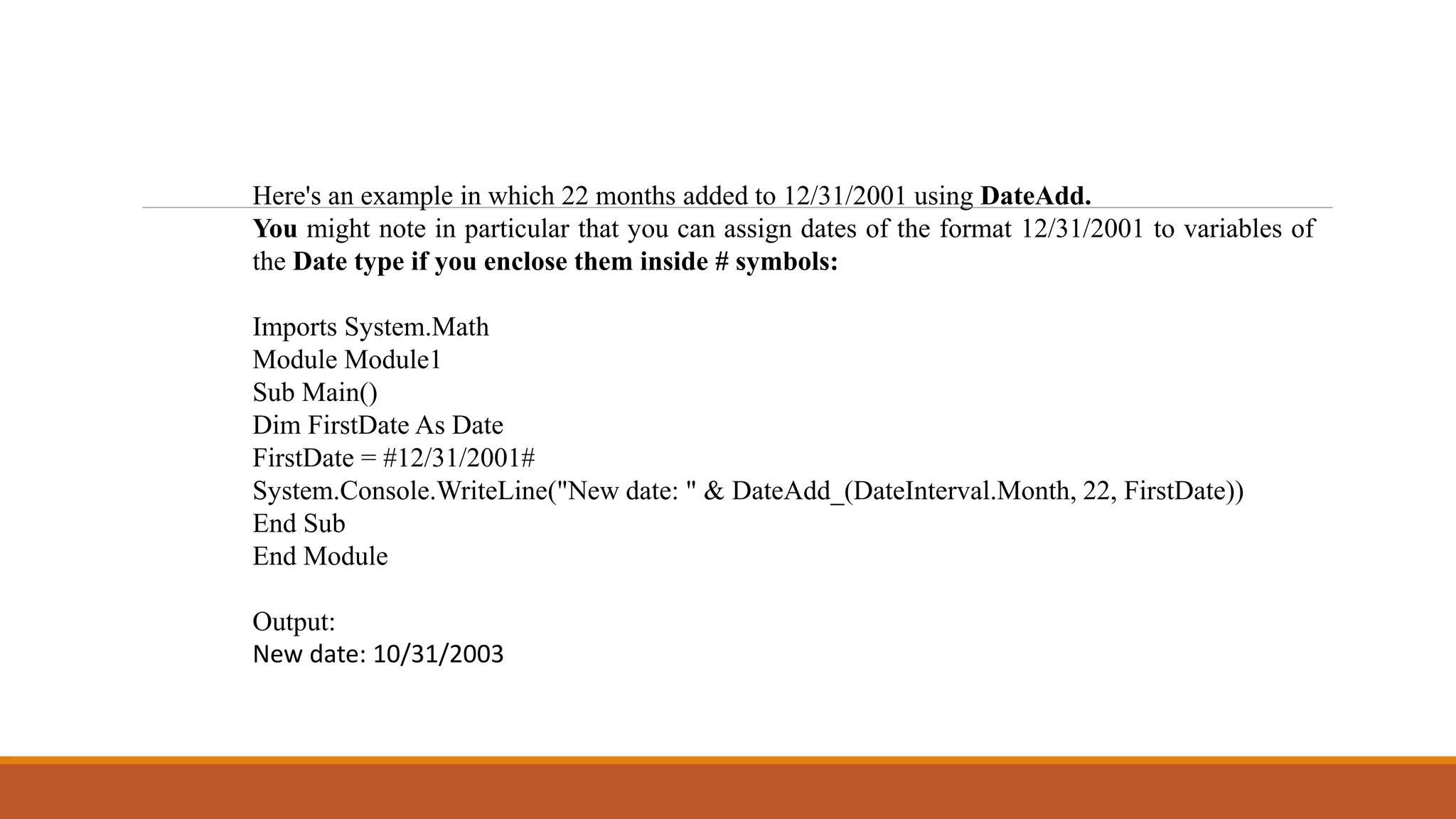


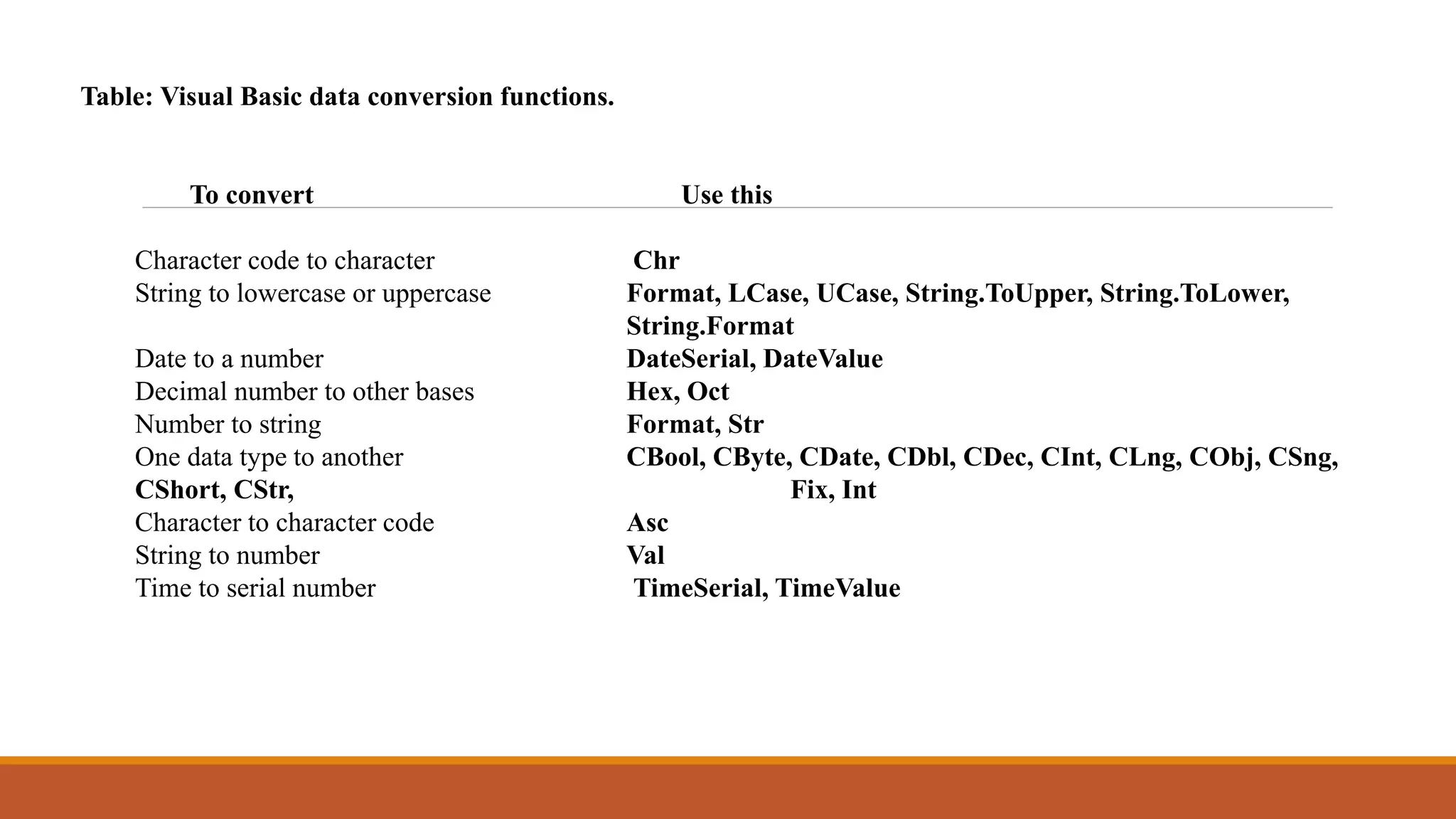
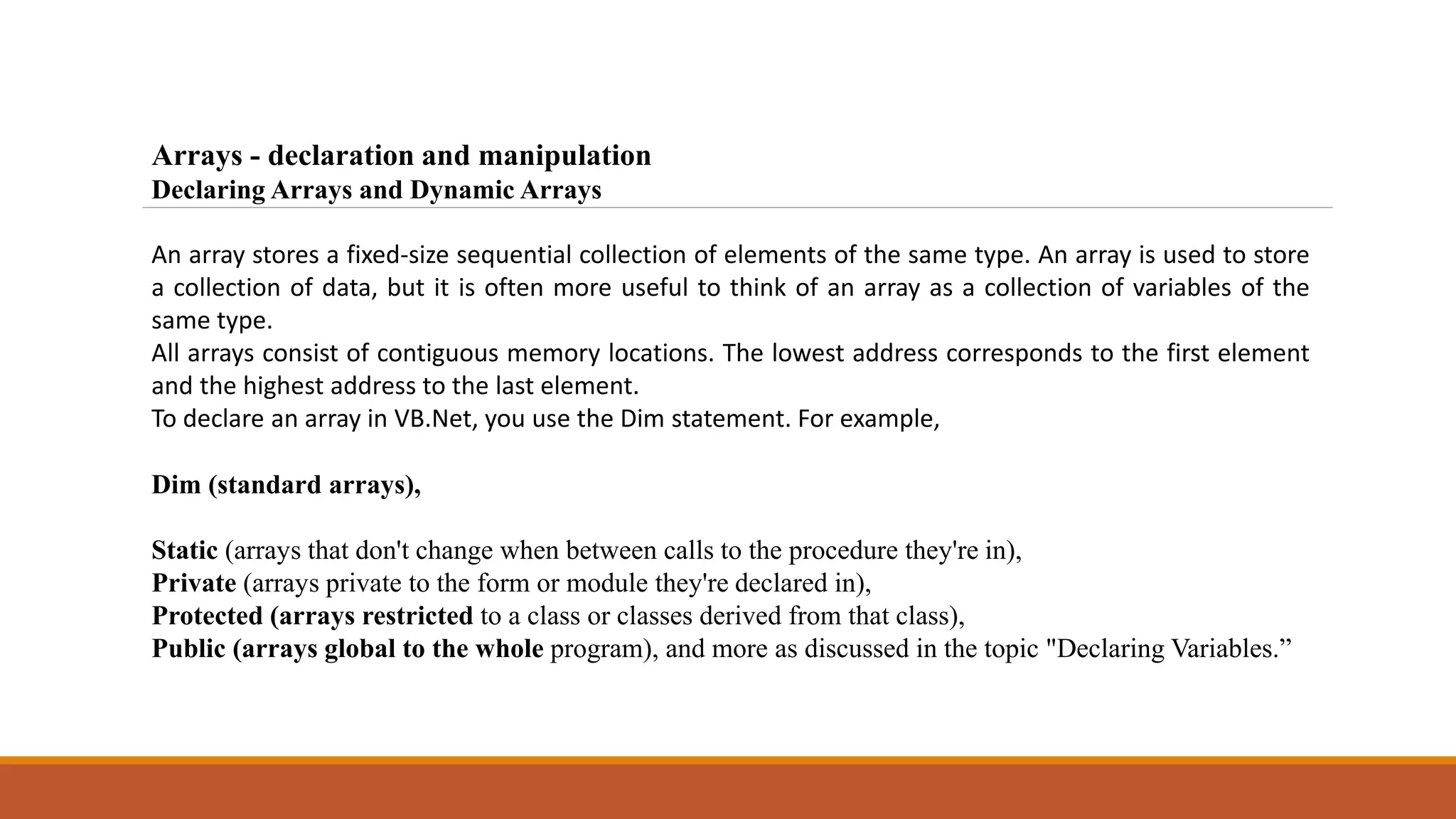

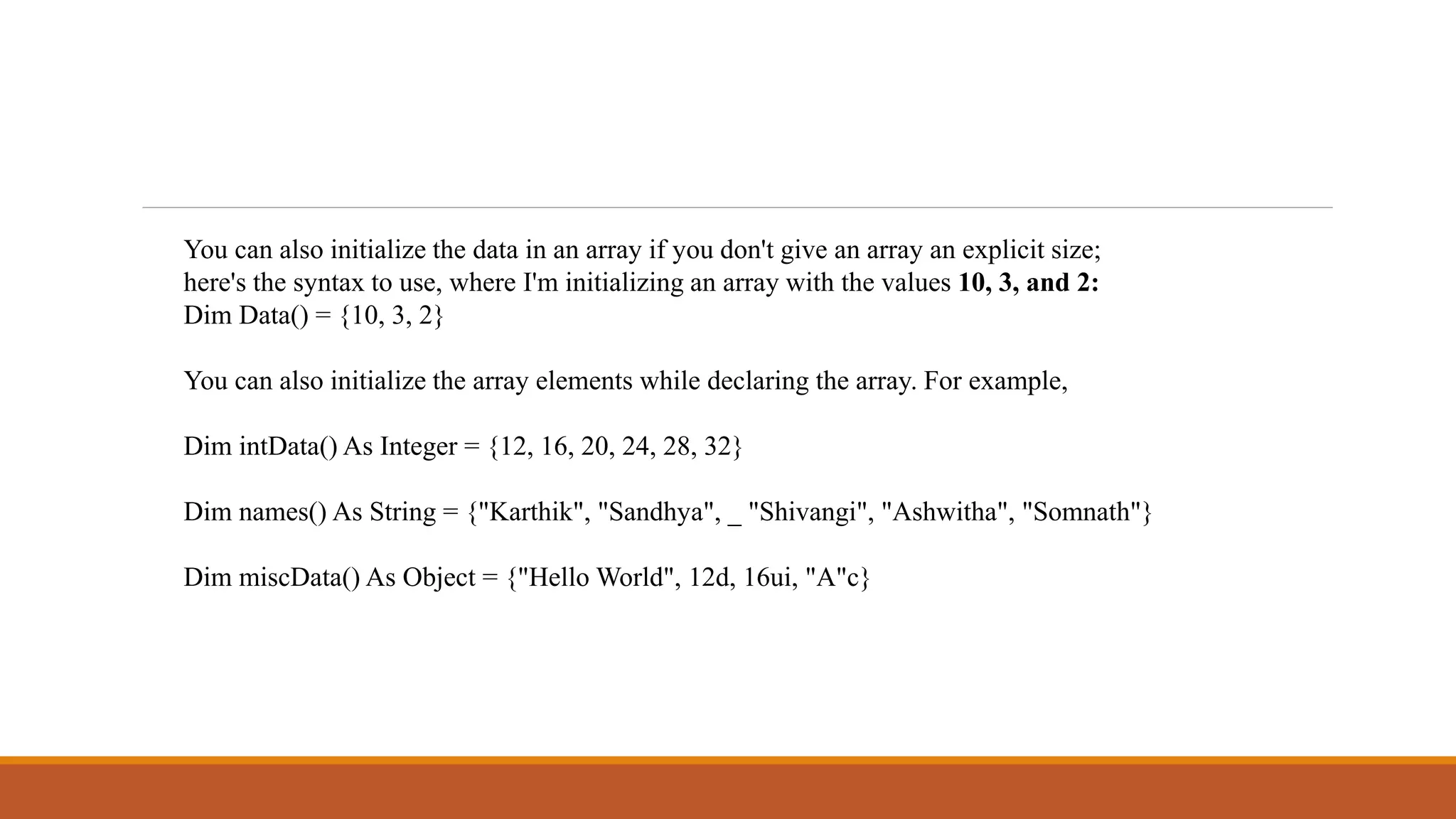
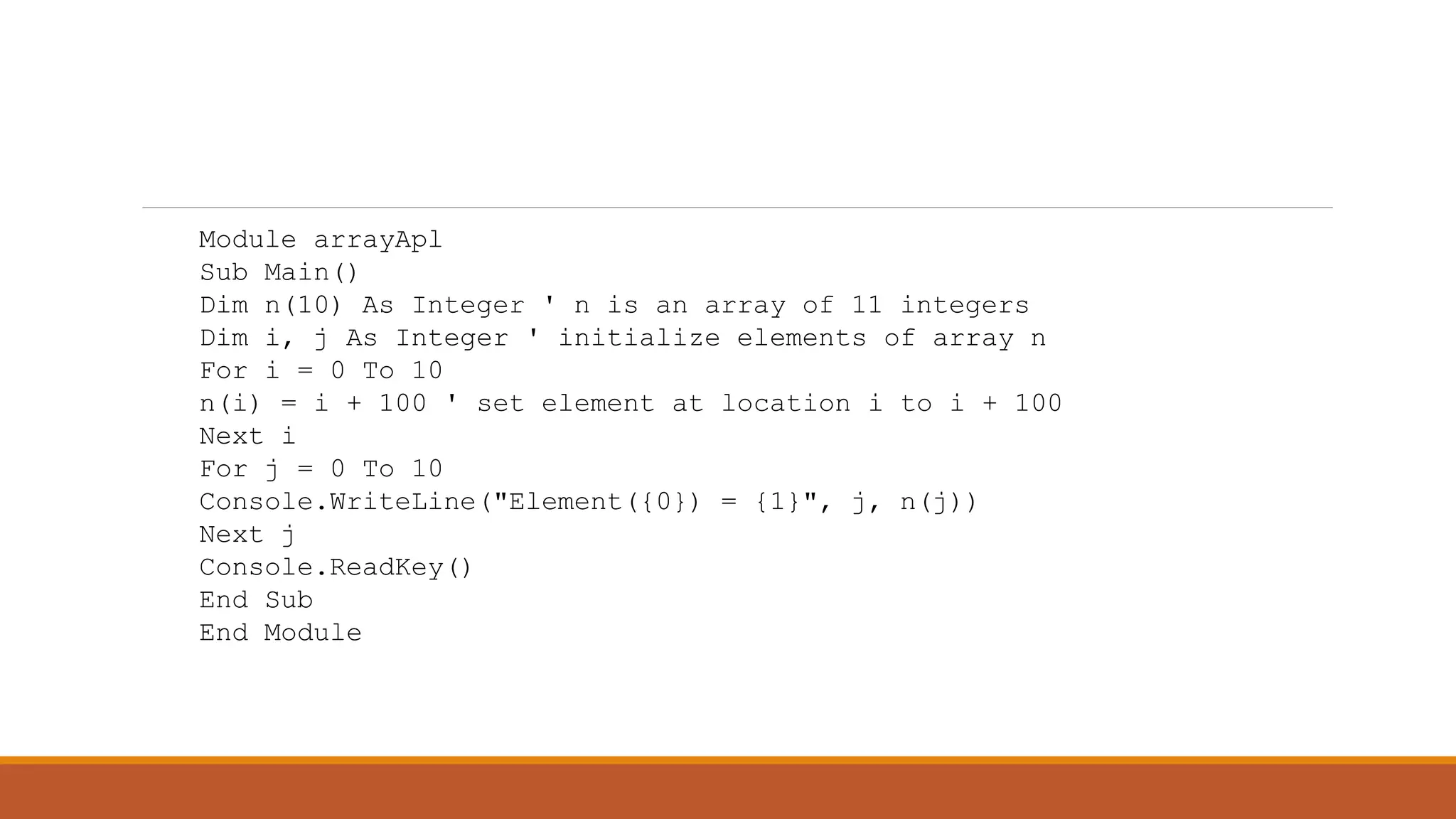
![Dynamic Arrays
Dynamic arrays are arrays that can be dimensioned and re-dimensioned as par the need of the program. You can
declare a dynamic array using the ReDim statement.
Syntax for ReDim statement −
ReDim [Preserve] arrayname(subscripts)
Where,
•The Preserve keyword helps to preserve the data in an existing array, when you resize it.
•arrayname is the name of the array to re-dimension.
•subscripts specifies the new dimension.](https://image.slidesharecdn.com/unitiiics-210216110743/75/BSc-III-Unit-iii-VB-NET-35-2048.jpg)
